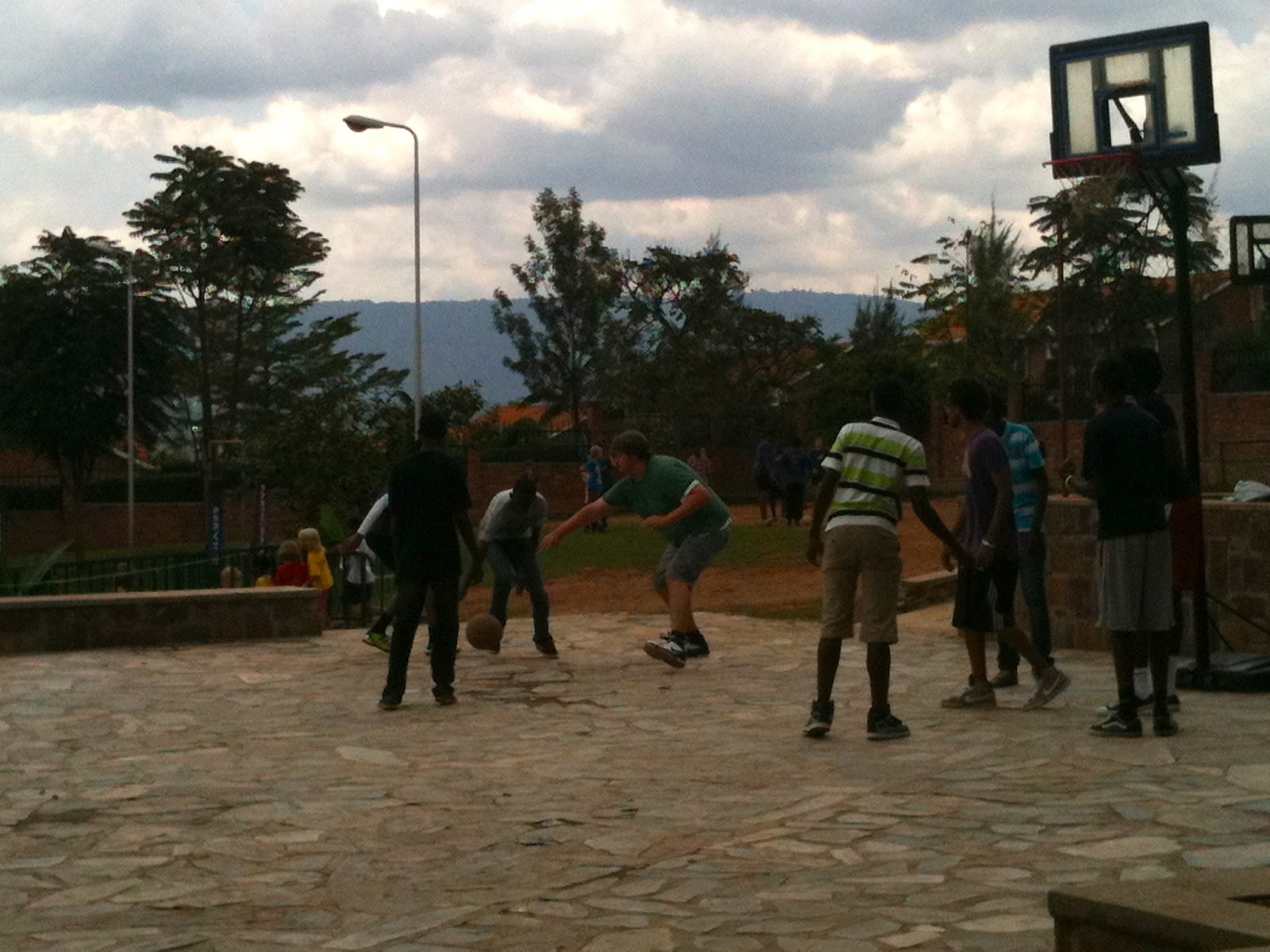We wanted to share some of our experiences from teaching this past year in Rwanda.
Chuck:

In addition to my role as a Math Teacher, I work as the
Network Administrator and IT Support for the school. A new Windows 2008 Server was installed this
year, and the school bought thin client computers that run off the
network. One of my big tasks was helping
to get the computer lab of 24 computers up and running, as well as
administering usernames and passwords to all of our students.
Once that was set up, I tried to take advantage of our
resources by having the students do projects in the computer lab. One of their early projects was about the
stock market. Groups picked a company to
“invest” in, followed its progress over the week, and displayed their profit or
loss using graphs in Microsoft Excel.
The kids really got into it, and there were some excellent
presentations.
In another project, students had to study the design of
buildings they found on the internet and design their own tower out of tooth
picks. Their design was supposed to
support a baseball, and most of them did.

This project started out more low-tech. Students measured the height of water in a
container with a hole at the bottom at different intervals. Later, they took their data and put it into
Excel. They then took the resulting
graphs and made connections between their displays and the shapes of the
various containers.
Since most of our projects are electronic, I don’t have the
chance to put a lot of student work up.
However, I always do when I get the chance.
Emily:
When we were studying diffusion and osmosis (Biology I), we
put lots of things from our kitchens into lots of salt and sugar solutions to
see what would happen. Short
answer: if you don’t clean them up by
Friday, they start decomposing over the weekend…
Student demonstration
of osmosis: the carrot in concentrated salt water shriveled, the one in fresh
water swelled up, and the one in a weak salt solution didn’t change.
This was our praying
mantis. The kids caught grasshoppers for
her during their lunch break; their favorite part was how she’d snag bugs with
the spines on her front legs, and then eat them head-first. We know she was a “she” because she produced
an egg sac that eventually gave to rise to several hundred tiny mantises. Unfortunately, she didn’t live to see her
children—or maybe not so unfortunate, since I bet she would have eaten them as
snacks.
For several weeks, students left insects for me as little
gifts for the mantis. Better than apples
but not as good as chocolate.
The P.E. teacher
brought me a chameleon one afternoon. He
(the chameleon, not the P.E. teacher) was never really a class pet because
everything I read indicated that he wouldn’t want to be anywhere near
middle-school kids, I released him
outside before long because he didn’t’ like any of the bugs I brought him. He could not, I’m sorry to say, turn the
color of whatever he was sitting on, but he did turn a dark color when he was
nervous, which was whenever I was around.
The middle-school science classes designed Newton-mobiles
whose movement was based on equal and opposite reactions. We raced them in class: two groups went with
sails (and Spiderman) while the other group used a snazzy flame-painted coke
bottle with a deflating balloon that didn’t survive the 2nd
trial. I wasn’t able to document the
kids clustered around their devices trying to generate enough wind by blowing
on them or fanning them with their notebooks because it turned out to be really
funny and I was laughing too much.
Both “male versus female” and “black versus white” were
English students analyzing cultural expectations in To Kill a Mockingbird.
The DNA molecule that was hanging across the ceiling is
pretty ragged by now, so we use it as an example of how high-energy radiation
affects cells. The row of drawings across
the top of the windows contains biology root words; the front window is
physical science terms; most of the back corner is wanted posters and Facebook
profiles for elements from the periodic table.

Switching gears between English and biology and physical
science has been tricky, but I like teaching in both disciplines. I don’t have photos of the puppet show or the
live guitar solo explaining how solids transform into liquids and gases, or the
huge mess in my room after we made Oobleck out of cornstarch and water. I was too busy keeping track of the
stopwatches to carry my camera when the kids ran sprints to find speed and
stopping distance in order to calculate how wide the out-of-bounds should be on
the basketball court. About once a
month, we go to the computer lab for the students to look up all the
imponderable questions they’ve been asking in class, but I can’t post kids’
photos online, so I can’t share their presentations.






















